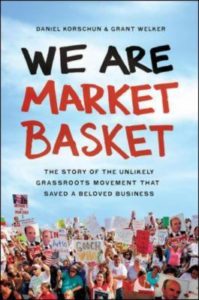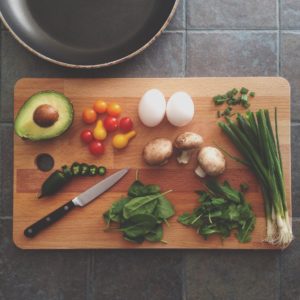My husband and I were visiting my sister at her home in New York last winter. While I had known for some time that she had turned into an incredible bread baker, my husband was experiencing the fruit of her labors for the first time. While he was was blissfully savoring his fourth or fifth piece of just-out-of-the-oven sourdough, my husband absently asked, “Why don’t you bake like your sister?”
I have to admit, I contemplated throwing the remainder of the loaf at his head while yelling, “Why don’t YOU bake like my sister?!” I resisted, but explained snarkily that working full time, volunteering several hours a week, and keeping house for His Royal Highness did not leave endless hours to devote to mixing, kneading, and rising.
When I mentioned this to my sister, she told me that baking bread was “easy” and “took no time at all.” I later learned that she was at least exaggerating, if not outright lying on both counts, but for the moment, I began thinking that I could give this home baker thing a shot and said as much.
Upon arriving home from our stay with my sister, I mostly forgot about the bread and our conversation until a big box arrived from Amazon. I opened it to find a banneton (yes, I had to look up what that was for), a book, assorted bread baking tools, and a note that read, “So you can bake like me. Or at least try. Love, Jessi.”
This got my competitive juices flowing, and I dove into the book with enthusiasm. “The Bread Bible” by Rose Levy Beranbaum is all anyone could ever want from a cookbook and more. It turns out, there are as many ways to make bread as there are stars in the sky, and this book seeks to familiarize readers with many of them. Within the first few pages, I learned that my kitchen was woefully lacking ingredients and equipment. Once this was rectified by a good trip to the grocery store and another to Sur La table, I got to work.
I found that kneading, even with my trusty Kitchenaid mixer, was a little too daunting. So I went searching for recipes with no kneading involved. Jim Lehey’s “My Bread: The Revolutionary No-Work, No- Knead Method” cookbook provided the perfect solution. According to this acclaimed baker, you mix flour, a small amount of yeast, salt, and water in a bowl and just leave it for 18 hours. Come back almost a day later, toss the thing in a really hot cast iron pot and bake- voila, bread!
I was skeptical at first. My loaf may have missed its mark as I was tipping it into the hot dutch oven that served as its cooking vessel. Despite having been coerced into place with several wooden spoons after having landed on a hot oven rack (pro-tip: take your cast iron pot all the way out of the oven before trying to tip your unbaked loaf into it), it actually looked ok, if a bit…rustic.
I cut through that crunchy crust and into the chewy crumb, slathered it with butter, and my husband and I took our first bites. As he said was, “This is the best bread I have ever eaten.” That’s all it took to send me into a baking frenzy.
I swiftly conquered my fear of kneading (although I still go back to Jim Lahey’s Basic No-Knead white bread and No Knead Italian Strecca recipes regularly) and moved on to making challah, Parker House rolls, bagels, ciabatta, pretzels, pizza dough, popovers, and almost every kind of artisan loaf you can think of. My counters are lined with flour containers and my cookbook shelf is at capacity.
Last spring, I scoured the Friends of the Library book sale for any bread baking book I could get my hands on. It turns out, the 1960’s edition of the “New York Times Cookbook” has a host of great recipes- just don’t expect details. For example, the Cuban bread that I forced my coworkers to test last week, instructed me to bake in a “hot” oven until “done”. Even without a specified baking time or temperature, it turned out fine and I got a serious confidence boost knowing that my knowledge of bread baking allowed me to correctly interpret these vague instructions.
That said, I have still not ventured into the strange and perilous land of sourdough and not everything I have made has been a hit. Come to find out, peanut butter bagels are only amazing if you have four legs, a wagging tail, and a wet nose. Also, the time I excitedly told my husband, “I will make the bread of your people!”, referring to his Swedish ancestry, I probably should have noted that Swedish Limpa bread contains anise and fennel. We both hate anise and fennel, and as such, we hate Swedish Limpa bread.
For the most part, we have not bought bread at a store in months (although I simply refuse to make hot dog rolls from scratch) and I love trying out new recipes from books old and new. Most of all, I love sharing recipes with my sister. While she is still the CEO of Sourdough, I am fairly certain that I can now bake like not only my sister, but like Rose Levvy Beranbaum, Jim Lahey, Mark Bittman, and any number of great bakers, at least in a small way.
Allison Palmgren is the Technology Librarian at the Morrill Memorial Library in Norwood, Massachusetts. Read Alli’s column in the August 18, 2016 issue of the Norwood Transcript and Bulletin.



